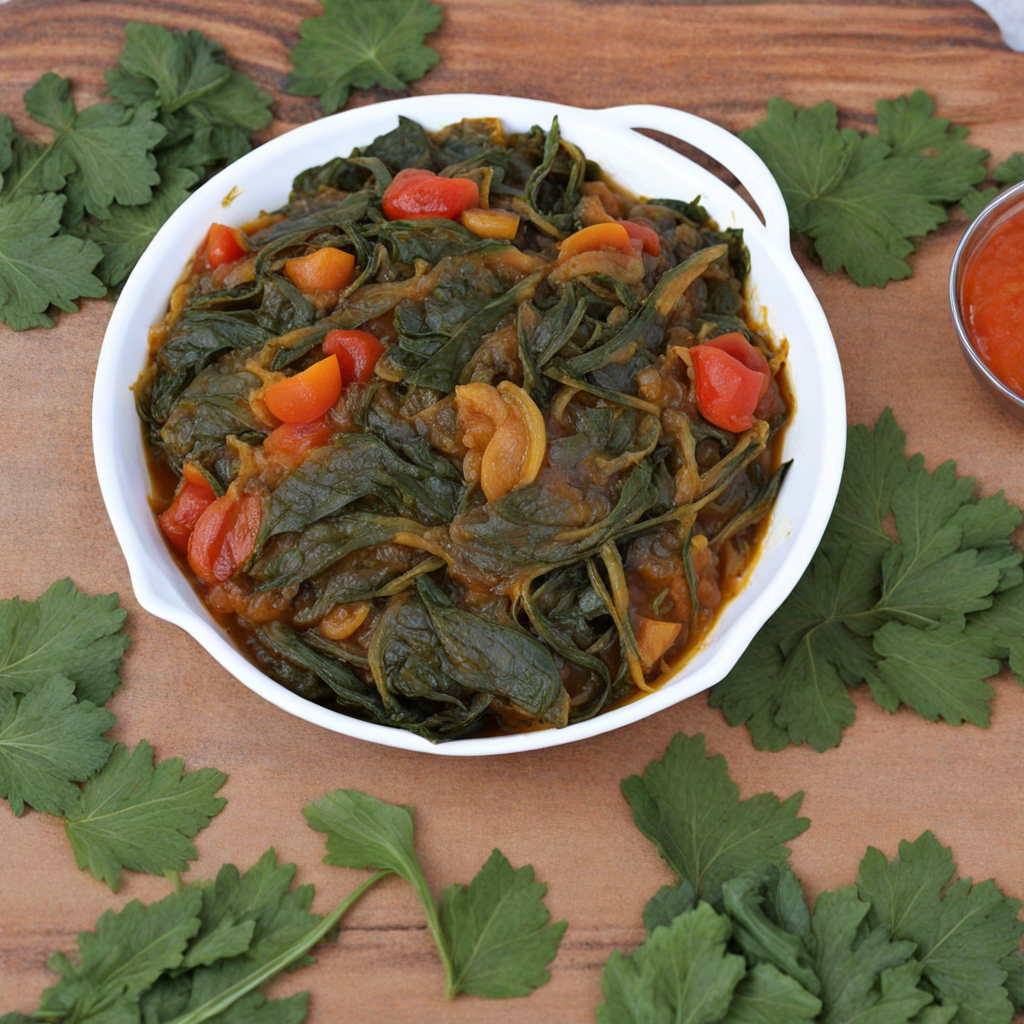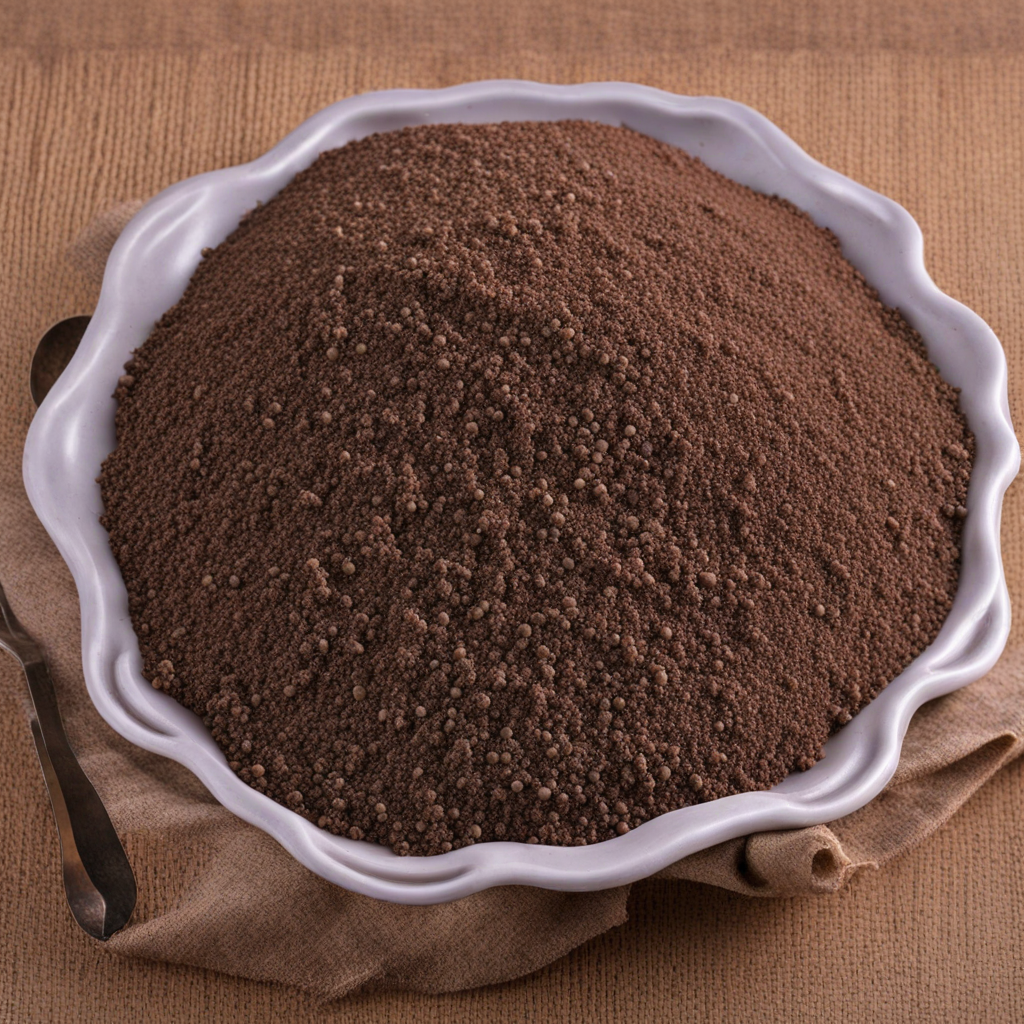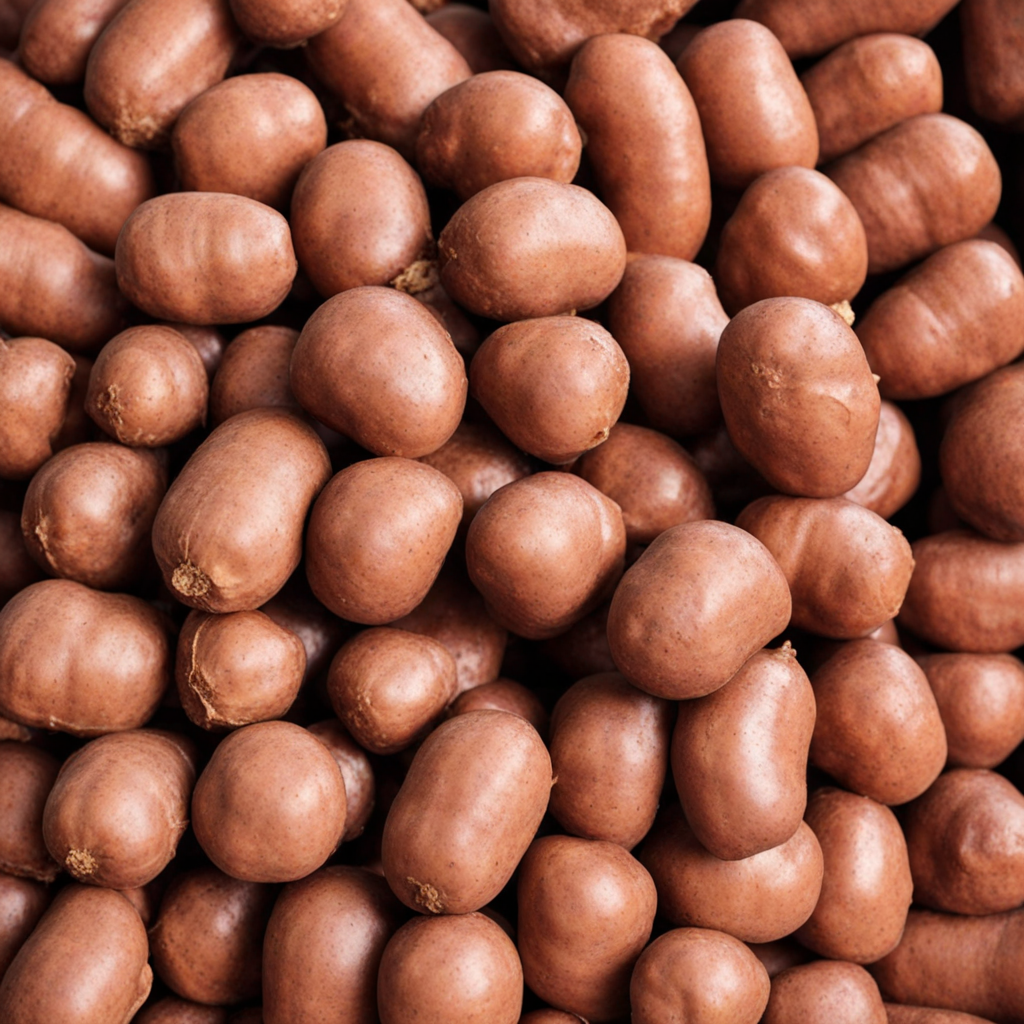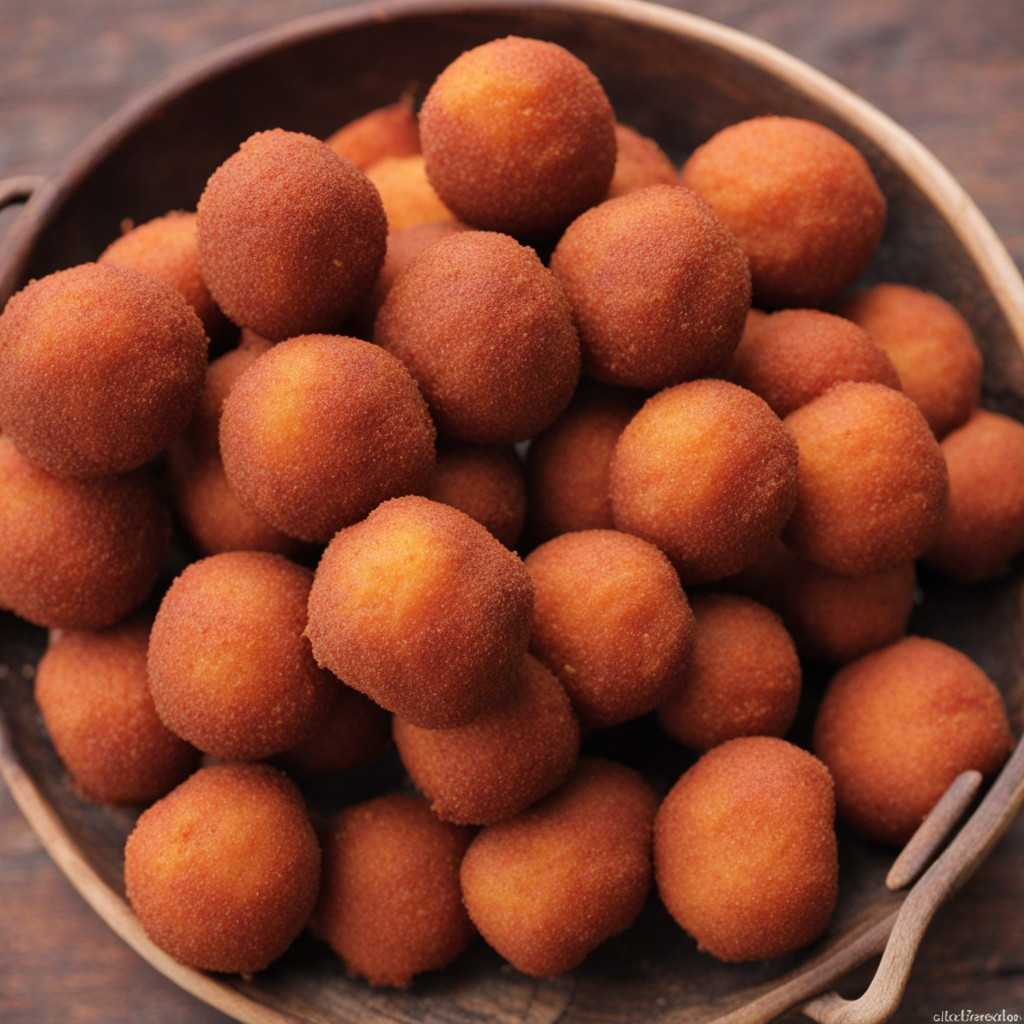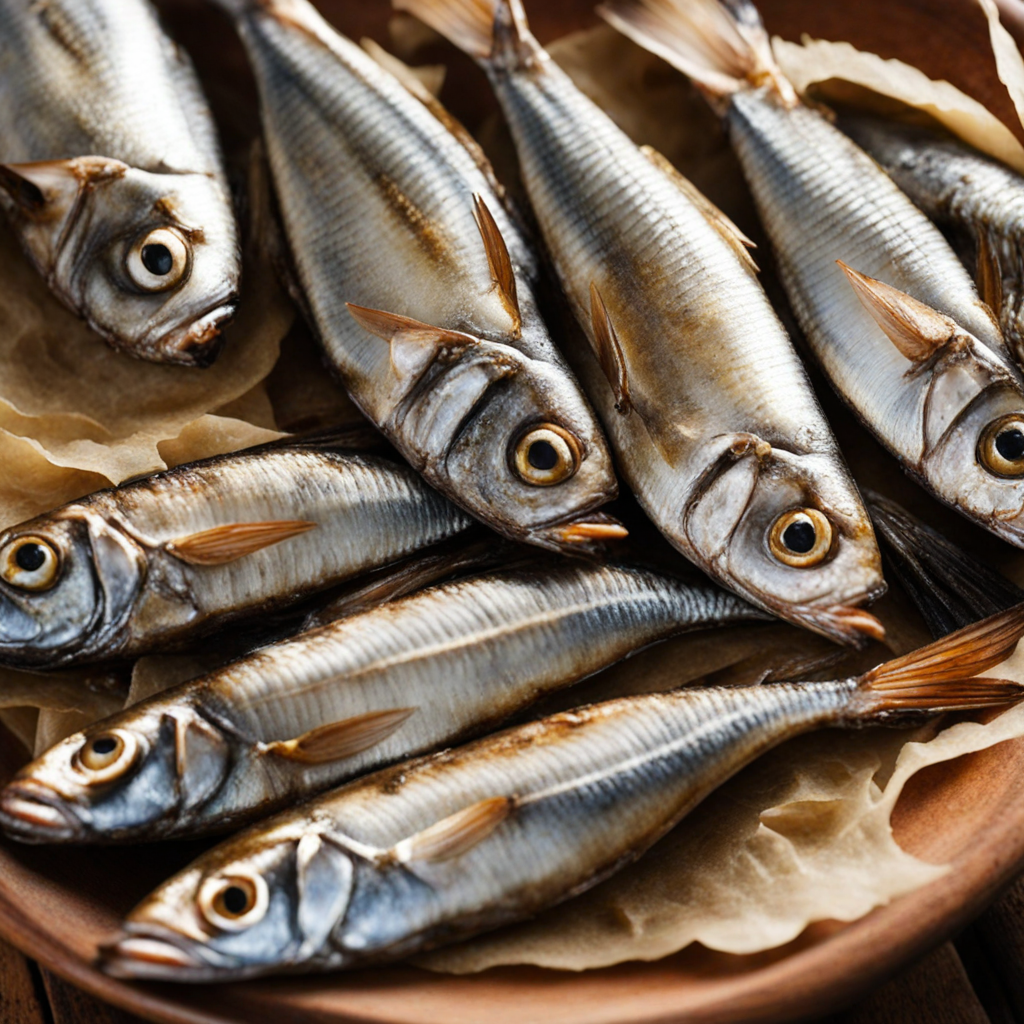Chibwabwa
Chibwabwa, a traditional Zambian dish, is a delightful representation of the country's rich culinary heritage. At its core, Chibwabwa consists of pumpkin leaves, which are tender and slightly earthy in flavor. These leafy greens are typically harvested when young, ensuring they maintain a vibrant green color and delicate texture. The leaves are often cooked down until they become soft and meld beautifully with accompanying ingredients, creating a dish that is both nutritious and satisfying. To enhance the taste of Chibwabwa, it is usually prepared with a variety of ingredients such as onions, tomatoes, and groundnuts (peanuts), which add depth and richness to the dish. The onions are sautéed until translucent, releasing their natural sweetness, while the tomatoes contribute a juicy acidity that balances the earthiness of the pumpkin leaves. Groundnuts are often ground into a paste or coarsely chopped, providing a delightful crunch and a creamy texture, making each bite a harmonious blend of flavors. Chibwabwa is often served as a side dish alongside staple Zambian foods like nshima (a thick maize porridge) or rice, creating a wholesome and hearty meal. The combination of the slightly nutty flavor of the groundnuts, the sweetness of the onions and tomatoes, and the tender pumpkin leaves creates a unique taste experience that reflects the agricultural bounty of Zambia. For those looking to explore new culinary adventures, Chibwabwa offers a taste of Zambian tradition that is both comforting and nourishing.
How It Became This Dish
The History of Chibwabwa: A Zambian Culinary Treasure Origins of Chibwabwa Chibwabwa, a beloved dish in Zambia, is primarily made from pumpkin leaves (Cucurbita maxima) and has deep roots in the agricultural traditions of the country. The origins of this dish can be traced back to the early agricultural practices of the Bantu-speaking peoples who settled in the region thousands of years ago. Pumpkins, along with other squashes, were among the first crops cultivated by these communities, as they thrived in the fertile soils of the Zambian landscape. Pumpkin leaves, known as "chibwabwa" in the local languages, were traditionally harvested from wild pumpkin plants before becoming a staple in domestic gardens. The leaves are particularly favored for their nutritional benefits, rich in vitamins A and C, calcium, and iron, making them a vital part of the Zambian diet. As agriculture evolved, the cultivation of chibwabwa became integral not only for sustenance but also for the cultural identity of various ethnic groups across Zambia. Cultural Significance Chibwabwa is more than just a dish; it embodies the spirit of Zambian culture and community. The preparation and sharing of meals, including chibwabwa, are essential components of social gatherings, celebrations, and traditional ceremonies. It is often served during significant life events, such as weddings and harvest festivals, reflecting the importance of community and togetherness. In Zambian culture, food is a means of expressing hospitality and building relationships. When chibwabwa is served, it signifies care and the desire to share one's blessings with others. The dish is often accompanied by nshima, a staple made from maize flour, which serves as a filler and complements the flavors of chibwabwa. This pairing is emblematic of Zambian cuisine, bringing together various elements to create a balanced meal. Chibwabwa also plays a role in traditional medicine within Zambian culture. The leaves are believed to have healing properties and are used to treat various ailments, including digestive issues and respiratory problems. This medicinal aspect further elevates the dish's status beyond mere sustenance, intertwining it with local beliefs and practices. Development Over Time The development of chibwabwa over time reflects broader trends in Zambian society, including globalization, urbanization, and agricultural innovation. In the pre-colonial and colonial eras, chibwabwa was primarily prepared using traditional methods, with families relying on locally sourced ingredients. As Zambia gained independence in 1964, the country experienced significant changes in food production and consumption patterns. The post-independence period saw an increased focus on agricultural policies aimed at boosting food security. Efforts were made to modernize farming practices, and this included the promotion of crops like pumpkin and its leaves. Agricultural extension services introduced new techniques for harvesting and preserving chibwabwa, making it more accessible to urban populations. Consequently, chibwabwa transitioned from being a rural staple to a dish found in urban markets and restaurants. In recent years, the rise of globalization has influenced the way chibwabwa is prepared and consumed. While traditional recipes remain popular, contemporary chefs and home cooks have experimented with the dish, incorporating it into fusion cuisines or serving it alongside international dishes. This evolution has led to increased awareness of Zambian culinary heritage on a global stage, as food enthusiasts seek out authentic experiences and flavors. Moreover, the emphasis on healthy eating has brought renewed attention to chibwabwa's nutritional benefits. As more people become aware of the importance of incorporating leafy greens into their diets, chibwabwa has gained recognition as a superfood. This has led to increased interest in growing pumpkin plants, not just for their fruit but also for their nutrient-rich leaves, further embedding chibwabwa into contemporary Zambian dietary practices. Traditional Preparation and Variations Traditionally, chibwabwa is prepared by boiling the pumpkin leaves until tender and then sautéing them with onions, tomatoes, and groundnut (peanut) paste. The dish is seasoned with salt and spices, creating a flavorful accompaniment to nshima. Some variations may include the addition of fish or meat for a heartier meal, reflecting regional preferences and availability of ingredients. In different regions of Zambia, the dish may take on unique characteristics. For instance, in some areas, chibwabwa might be cooked with the addition of traditional herbs or local spices that enhance its flavor profile, showcasing the diversity of Zambian cuisine. Additionally, modern interpretations may incorporate ingredients such as coconut milk or cream, elevating the dish to suit contemporary palates while still honoring its roots. Chibwabwa in the Modern Context Today, chibwabwa is celebrated not only as a traditional dish but also as a symbol of Zambian identity. Food festivals, culinary competitions, and cultural events often feature chibwabwa, showcasing its versatility and importance in Zambian gastronomy. As Zambians continue to navigate the complexities of modern life, chibwabwa serves as a reminder of the deep agricultural heritage and communal values that define their culture. The rise of social media has also played a role in promoting chibwabwa, allowing food lovers to share recipes, cooking tips, and personal stories associated with the dish. This digital platform has helped foster a sense of community, connecting Zambians both at home and in the diaspora, and encouraging younger generations to embrace their culinary heritage. Conclusion Chibwabwa is not merely a food item; it is a vessel of history, culture, and community. From its origins in ancient agricultural practices to its modern interpretations, chibwabwa has evolved while remaining a cherished staple in Zambian households. As Zambia continues to change, chibwabwa will undoubtedly remain a significant part of its culinary landscape, bridging the past with the present and nurturing a sense of identity and belonging among its people. Through every leaf and every meal, the spirit of chibwabwa lives on, nourishing both body and soul.
You may like
Discover local flavors from Zambia


